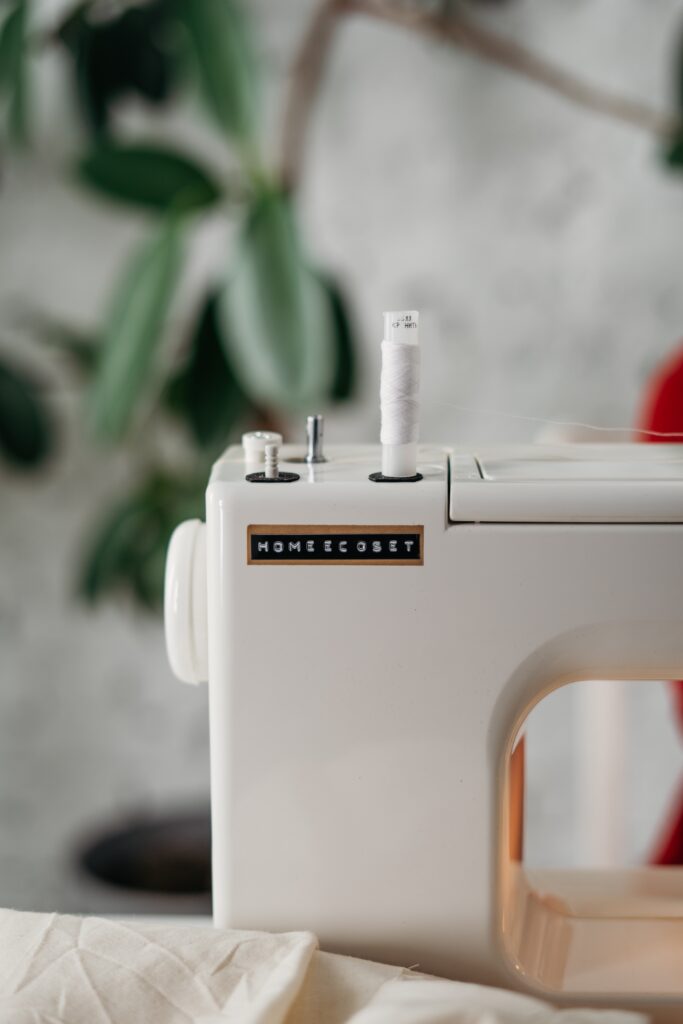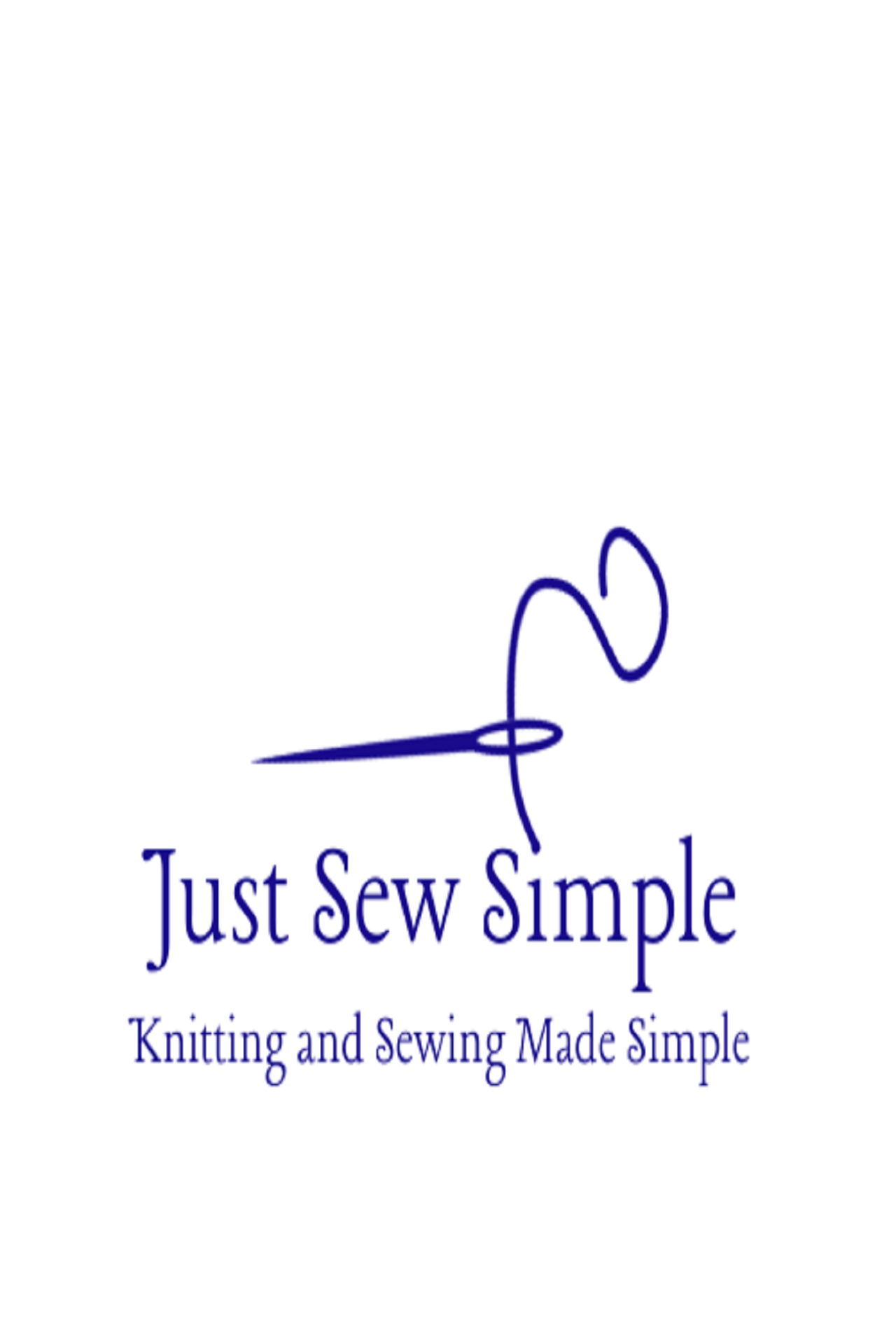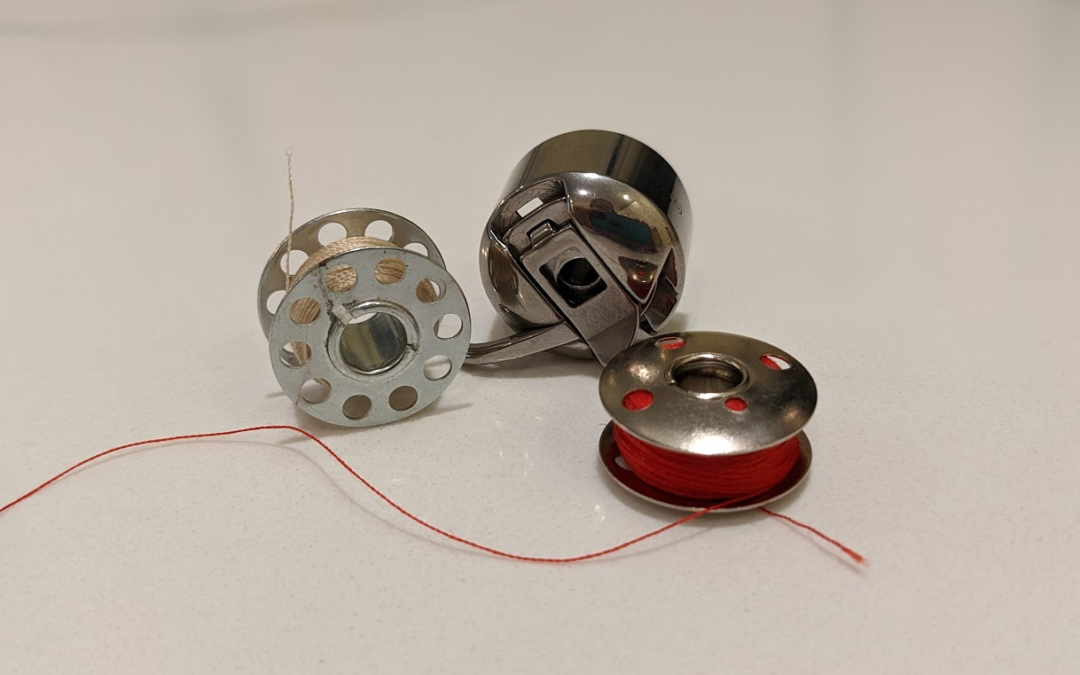If you’re thinking about picking up sewing but are concerned that it can be expensive, your fears are valid. However, it’s absolutely possible to learn sewing on a budget. It’s wonderful to have a fulfilling hobby that brings you great joy.
But, unfortunately, sometimes hobbies can get on the, um, pricy side. If you’re getting into sewing because sewing clothes is cheaper than buying, be aware that it isn’t necessarily true. But with some extra effort, you can keep the cost down.
That doesn’t mean you should be frightened away from picking up sewing! There are tons of wonderful ways sewing benefits your mental and physical health.
Sewing on a budget means learning to sew and create clothing while spending relatively little money. This may involve finding alternative methods for getting your materials, like buying fabric on sale or using repurposed materials. You can also save money on your tools and equipment. You’ll still be able to create high-quality and cute projects while being mindful of your finances.
Happy stitching!
Tips for Saving Money on Fabric
Yes, there is pricey equipment and many tools involved in sewing, and all that can add up quickly. What surprises most new sewers, though, is the cost of fabric. Decent quality fabric can cost between $30-$60 per yard. That’s a hefty price tag, and I don’t blame you if it makes you think twice about continuing with this hobby.
However, there are several workarounds that may help you save a bit of cash. Sewing on a budget doesn’t mean you are destined to only ever work with cheap quality fabrics; you can still find excellent quality material without blowing your budget.
One helpful idea is to join online fabric swap groups or forums to trade fabric with other sewers. If you have some material left over from another project, you may find somebody with nice fabric willing to make a trade. They may even agree to let you take it off their hands for a reasonable price.

Fabric Sales and Clearance
It takes some work, but keep your eyes peeled for fabric sales! Sewing on a budget means that you need to do a bit of legwork to find affordable fabric options, but it can pay off big time.
Subscribe to your favorite fabric store’s newsletters and email list. These will notify you about upcoming sales and promotions, so you can plan ahead and get to the store on the day of the sale.
Also, keep your eyes peeled for their clearance events, usually held at the end of each season. You can find the remnants of the season’s best fabrics that need to be cleared out to make room for new materials; even if you can’t make something with the fabric right now, hold on to it for when you can!
Online fabric retailers also often offer clearance items and weekly deals. Check Fabric.com or JOANN Fabric and Crafts regularly for their best online sales. You may need to do a lot of combing and visit often, but you can pull off some amazing finds!
Scrap Fabric and Upcycling
Some projects don’t require much fabric; in those cases, you might find scraps that will work. Ask your local fabric store if they have a discount or remnant section. They sell those pieces for reduced prices because they’re usually more challenging to sell. They also may have some end-of-bolt or overstocked fabric that you could use.
Check out thrift stores and garage sales, too. You may get lucky and find gently used or vintage fabric you can repurpose for a beautiful sewing project.
Sometimes, finding fabric for sewing involves getting a little creative. For example, you can use alternative materials, such as bed sheets or tablecloths, for your sewing projects. This is called upcycling and almost always costs less than traditional fabric.
Bulk Purchasing
If you’re planning a large sewing project or making several similar garments, you may consider buying your fabric in bulk. Like purchasing a giant carton of crackers from a big-box store saves you money from buying that same amount from your corner grocery store, bulk fabric works the same way.
The only downside is that you are fully committed to that fabric for a while. So, make sure you really like it!
Cost Effective Sewing Tools and Equipment
The cost of basic supplies for sewing can really begin to add up. Thread, needles for when you sew by hand, scissors, and all the other nifty little gadgets that perform the job neatly aren’t cheap. Why pay full price when you can save some money that might be better spent on that gorgeous fabric you’ve been eyeing?
High-End Vs. Budget Sewing Machines
When it comes to looking for a sewing machine, the array of options can be overwhelming. Whether you’re just learning or you’re a veteran sewer, there are so many considerations to take into account when investing in the perfect machine.
High-end models often have a wide range of features and stitch options and usually have greater reliability than budget machines. They often offer higher levels of performance and might suit those who sew more regularly or require more detailed techniques. However, they also come with a heftier price tag.

But those bells and whistles aren’t usually necessary for somebody who’s just starting out or is only a casual hobbyist. Spending far too much on a sewing machine that’s more than you need is one of the most common sewing mistakes for beginners. You may not need those super advanced features. Budget sewing machines are often designed with simpler technologies and have fewer features than their high-end counterparts. However, they’re still quite reliable and get the job done.
Ultimately, the best option depends solely on your own needs and capabilities. Buying a beginner’s sewing machine all comes down to a personal choice. No matter your budget, a suitable alternative is sure to be available!
Second-Hand and Gently Used Sewing Tools
Shopping for second-hand or gently used sewing tools is an excellent way to save money and get quality sewing supplies. Items such as sewing machines, fabric, and notions often cost a fraction of what they would brand new.
It’s essential to do some research when shopping this way so you know what kind of item you’re buying and whether or not it will work for your desired project. Shopping second-hand allows you to learn more about sewing tools while also saving money. It’s also a great way to decrease sewing waste in the world, which is always beneficial!
Local thrift stores often have a great collection of gently used sewing supplies and tools for much cheaper than department store prices. In addition, online consignment shops can be an amazing resource for all levels of sewing through websites like eBay or ThreadUp.
Sales and Discounts on Sewing Equipment
Sewing on a budget doesn’t have to be as challenging as it might seem. Shopping around for sales and discounts is a great way to unlock sewing equipment at reasonable prices. Again, signing up for your local retailers’ newsletters and email lists is an ideal way to stay informed about ways to save money.
Shopping for sewing accessories during seasonal sales, like 4th of July or Labor Day, is also a great way to save cash. (Of course, there are always Black Friday sales, but those aren’t for the faint of heart!)
With enough research and patience, you can build up your sewing toolbox without breaking the bank!
Finding Budget-Friendly Sewing Inspiration
Inspiration for saving money is all around us! We just need to know where to look. Whether we’re budgeting our grocery bill, our entertainment, or our hobbies, there are tips and tricks aplenty.
(While you’re in the thrifty mood, check out these best budget-friendly sewing room ideas!)
Look for Free Online Resources
You can find more free projects online than you expect! A sewing pattern from your local shop might cost you several dollars. However, you can save yourself a few dollars when you use free patterns offered on sewing websites. These may not be as convenient as store-bought packages, but saving money usually requires some sacrifices.
Can’t find exactly what you’re looking for? No problem! You can learn how to make your own sewing pattern. Again, this is a free option and incredibly satisfying. Just think how proud you’ll be to wear your very own design!
Join Sewing Groups and Forums
Check out online sewing groups and forums to connect with like-minded sewists. Finding a huge online community at your fingertips can be like suddenly having a ton of sewing experts in your back pocket. More experienced sewers can be a lifesaver when you first learn to sew.
The nice thing about these communities is that you’ll have access to sewers of all levels and talents from all over the world. You can pick up many creative tips for your sewing and learn some shortcuts others have discovered for sewing on a budget.
Follow Budget-Friendly Bloggers and Influencers
Another beautiful benefit of the internet? Bloggers and influencers are happy to share their knowledge with you for free. And there are many sewing hobbyists online who understand how expensive sewing can be. They’re delighted to share their best advice for working on your passion while sticking to your budget.
Check out some of my favorite budget-friendly sewing bloggers and influencers:
So Sew Easy has a huge range of sewing projects and patterns. Several are for cost, but the page offers a vast selection of free sewing patterns, including many budget-friendly options. Considering that I don’t like to wear real pants since the pandemic (who does?), I’ve got this High-Low T-Shirt on my to-sew list.
Melly Sews offers a giant choice of projects and provides many great options for those sewing on a budget. There are so many cute and unique projects on her page, but I’m eyeing this zip-up hoodie. (Are you noticing my trend in comfort?)Make It & Love It features tons of helpful projects, recipes, and decorating. There’s nothing you can’t find on this site! However, I’m really, really drawn to this page because there’s an entire section dedicated to repurposing and upcycling with your sewing! You can even find 40 Sewing Projects Made with ¼ Yards or Less.
So, I’d like to hear from you! Did you pick up any new tips from this post? What are your favorite ways to sew on a budget?

